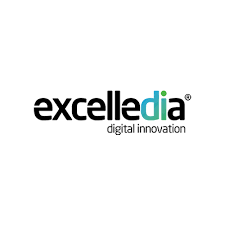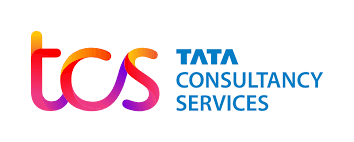ZOOPLE TECHNOLOGIES HOLDS ONE PRIME POSITION IN SOFTWARE TESTING COURSE IN KOCHI
Best Software Testing Institute in Kochi
The Software Testing Course is a Specialized training program crafted to make the students competent in the core Testing concepts and their principles. Zoople Technologies is the best software testing institute in Kochi, offering a top-notch software testing course that accommodates your budget and expertise level with choice and flexibility.
Software testing is the process of verifying if a software program performs well and meets technical business requirements. It enables learners to familiarize themselves with significant testing techniques, including black-box testing, white-box testing, mobile testing, formal testing, and web testing. Zoople, the Software testing institute in Kochi provides comprehensive training programs for individuals seeking expertise in software testing.
In any situation, having professional training and practical experience in software testing is recommended, especially through a Software Testing Course in Kochi. Under the guidance of experienced testing professionals, you will be an expert from this testing course with key testing competencies in test design, scheduling, scenarios, metrics, and error analysis.
Depending on your professional goals, such as whether you want to create your own business or work. Enroll in the leading software testing institute in Kochi to enhance your skills and knowledge in the field of software quality assurance. If you aspire to work in top IT companies and aim to enhance your skills for these opportunities, Our Trainers provide complete freedom to the candidates, to learn about the topic and do so by using examples from the real world.
Considering a career in software testing? Explore the top-notch training programs offered by the software testing institute in Kochi.
Importance of Software testing :
- It identifies mistakes made during the development stage.
- It guarantees customer satisfaction with the service or application.
- It guarantees that the product is provided in proper quality.
- Overall costs for the customers are decreased.
- It guarantees the software application’s efficiency.
- Ensures there are no errors.
- Supports the ongoing operation of the business.
Best Web App Testing Institute in Kochi
With Zoople, you can choose and customize a high-quality web app testing course to fit your needs and skill level. We utilize a lot of the tools and techniques we teach, and we stay on top of all the most recent advancements. Delegates rate all of our excellent professional instructors and courses, assuring constant feedback and advancement. At Zoople Technologies, we specialize in web app testing. Our training is designed for quick and easy optimization, ensuring comprehensive learning tailored to your needs. We prioritize blending academic knowledge with practical skills, highlighting the importance of adapting to evolving technological trends.
Zoople, recognized as the premier software testing training in Kochi, specializes in comprehensive web application testing. Elevate your digital presence by acquiring complete proficiency in web app testing. Our training experts you with end-to-end expertise, ensuring you develop top-notch testing skills aligned with the latest standards in the software industry. Mastering the art of evaluating product quality and assurance through Zoople’s best software testing training in Koch, Zoople incorporates tools focusing on industry expectations directing you to fortune companies.
What is a Web App Testing Course?
A Web App Testing Training Course aims to empower participants with the required knowledge and skills required for thorough testing of web applications. The course covers aspects such as functionality, performance, security, and overall quality assessment. Such a course typically covers a range of topics to ensure that participants can confidently contribute to the development and maintenance of high-quality web applications.
Static testing involves reviewing and analyzing code without executing it, while dynamic testing involves running scripts to examine their behavior. This Web App Testing training course teaches both functional and non-functional tests. It is tailored for collaboration with automated software testing firms that provide a testing system built on their own platform.
Why Learn Web App Testing?
Every modern business must have a website or web application to meet the requirements of Today’s commercial landscape. The way a website or app looks and functions significantly influences how customers view the company and, consequently, their confidence in its products. Web applications are essential for modern organizations, playing a crucial role in their operations.
Web testing is an approach used in software testing to check websites or web apps for potential problems before publishing them. Web app testing ensures that web applications function as intended and meet quality standards. It helps identify and rectify defects, ensuring a high-quality user experience. Testing finds problems like broken links, slow speed, or unpredictable behavior that can affect how happy users are with a website or application. Acquiring skills in Web App Testing enhances your professional profile. With the increasing reliance on web applications, professionals with expertise in testing are in high demand across various industries.
Scope of Web App Testing
Web testing or website application testing is the testing that is done before hosting or making your website live for general-use to users.
- Working on the website:
During the staging of the website, a developer frequently ignores certain tiny mistakes. Broken lines, an extended loading time, inaccurate outputs, etc. are examples of these issues. Rectify these minor mistakes prior to presenting the website to end-users.
- Performance:
Users favor websites that load quickly and without any issues. It’s crucial to work on the website’s version, the code, the visuals, and any other elements that could influence how quickly the application process.
- Search Engine Optimization:
Broken lines, image loading delays, functionality difficulties, duplicate material, etc. are a few common problems with websites. In order to keep the application up to date, one must periodically check their website for such mistakes.
- Security:
One of the most significant considerations to consider when creating a web application is security. User information needs to be secured against unauthorized access, data theft, and potential leaks.
Explore the latest methodologies and tools in the field of software testing through our software testing course in Kochi.
Best Mobile App Testing Course in Cochin
Mobile application testing ensures that software designed for handheld devices functions correctly is user-friendly, and maintains consistency. The testing process can be either automated or manual.
Mobile application testing online and offline training from Zoople Technologies is a combined professional course that teaches learners how to test native and hybrid mobile applications as well as how to use software testing frameworks and tools. Our training is delivered by qualified experts with experience in the software development and testing fields. Our mobile application testing course aims to offer our learners extensive hands-on experience while providing valuable industry insights into the mobile application testing field.
Why Use Mobile App Testing?
Mobile app testing involves assessing the functionality and usability of a mobile app (on Android or iOS) before it is made available to the public. The ultimate aim of creating mobile apps is to expand business reach and connect with a border global audience. Testing mobile apps is essential to ensure that the app aligns with anticipated technical and business specifications. To ensure effective mobile app testing, teams should test applications on various screen resolutions, different operating system versions, and diverse network bandwidths. To make sure the app works perfectly on all kinds of devices when it is launched to the public.
Who can Study Mobile App Testing Course?
- We don’t have a certain age for this and so anyone can learn. But if you are a college student or even a fresher, you will be able to connect with the technologies quickly and be a certified Mobile App Testing Professional in Kerala in a matter of months.
- With the certification obtained at the Mobile App Testing Institute in Cochin, you can get your chance to enhance the performance of your technical teams and build professional productivity.
- Our custom-made curriculum is best for students who have completed their graduation and also employees who love to upgrade their careers.
- Even if you are presently a fresher, take your time to schedule the classes and gear up for a better career tomorrow. Today, almost every business needs a mobile app. Once you learn this, it will be a real source of a second income.
The Benefits of Mobile App Testing Course
- Learn the essentials of how Mobile App Testing is used in the industry.
- The course is designed and updated regularly by industry experts. This is why our Mobile App Testing training institute in Kerala is far better and result-oriented than normal courses.
- Our instructors regularly learn techniques from the industry, so that the students are benefitting from such modern mobile app technologies in the most budget-friendly manner.
- The fundamental science behind every mobile app is taught with a practical approach so that students are able to think differently and logically when they get into the workstream.
Who can Study the Mobile App Testing Course?
The Mobile App Testing course is suitable for various professionals and individuals who are interested in gaining expertise in testing mobile applications. Here are some groups of people who can benefit from studying a Mobile App Testing course:
- Students and Graduates:
If you’re a college student or a fresher, you can easily grasp the technologies and become a certified Mobile App Testing Professional in just a few months in Kerala. Individuals studying computer science, software engineering, or any other field can pursue a mobile app testing course to gain practical skills that are highly relevant in today’s tech industry.
- Software Testers:
Those already working in the field of software testing, quality assurance, or quality control can enhance their skills by focusing specifically on mobile app testing.
- Developers:
Mobile app developers who want to understand the testing process and ensure that their applications meet quality standards can benefit from learning mobile app testing.
- Quality Assurance (QA) Professionals:
QA professionals involved in ensuring the overall quality of software can expand their knowledge to include mobile app testing, given the growing importance of mobile applications.
- Project Managers:
Those responsible for overseeing software development projects can benefit from understanding mobile app testing to ensure the successful delivery of high-quality mobile applications.
- Business Analysts:
Business analysts involved in requirements gathering and project planning can benefit from understanding mobile app testing to better communicate with development and testing teams.
The Benefits of Mobile App Testing Course
- Skill Development:
Learn the methodology, tools, and procedures for testing mobile apps by doing so.
- Industry Relevance:
Keep updated with the most recent developments and standards in mobile app testing.
- Career Opportunities:
Become an expert in a niche area to improve your career prospects and stand out to hiring managers.
- Certification:
Obtain a recognized certification, validating your expertise and commitment to quality in mobile app testing.
- Quality Assurance:
Learn how to ensure the functionality, usability, and performance of mobile applications, contributing to higher-quality app development.
- Efficiency and Cost Savings:
Understand how effective testing processes can save time and resources by identifying and fixing issues early in the development cycle.
Training Syllabus
- Quality
- Quality Assurance
- Quality Control
- Verification
- Validation
- Testing
- 7 Principles of Testing
- Difference between product and project
- Activities before Software Development
- Conclusion,
- Software Development Life Cycle (SDLC)
- Different Software Development Model
- Waterfall Model
- V- Model
- Iterative Model
- Agile Model,
- Software Testing Life Cycle (STLC)
- Levels of Testing
- Unit/ Component Testing
- Structural Techniques
- Functional Techniques
- Integration Techniques
- Top down approach
- Bottom Up approach
- Different between Stubs and Drivers
- System Testing
- Acceptance Testing
- Conclusion
- Software Testing Life Cycle
- Overview of the Stages of STLC
- Requirement Analysis
- Requirement Traceability matrix
- Test Planning
- Risk Management
- Functional Requirements
- Test Scenarios
- Test case development
- Test documentation review
- Test environment setup
- Test Execution
- Test suite
- Test Log Preparation
- Defect report/ Bug report
- Test cycle closure
- Test reports
- Static/Non- Execution Based testing
- Dynamic Testing
- Black Box Testing
- White Box Testing
- Gray Box Testing
- Functional Testing
- Ad-hoc Testing
- Negative Testing
- Exploratory Testing
- System Testing
- Smoke Testing
- Sanity Testing
- Regression Testing
- Retesting
- Non Functional Requirement (NFR) Testing
- Security Testing
- Compatibility Testing
- Localization Testing
- Performance Testing
- Usability Testing
- Accessibility Testing
- Database Testing
- Maintainability Testing
- Reliability Testing
- Portability Testing
- Difference between Desktop, Client - server and Web Application
- Different Types of Web Testing
- Cloud Testing
- Defect management overview
- Defect Status
- Defect Life cycle / Bug life cycle
- Defect Priority
- Defect severity
- Release management
- What is UAT
- Need of UAT
- Acceptance Criteria for UAT
- QA teams Role
- UAT Process
- UAT Planning
- UAT Execution
- Go / No- Go Decisions
- AUTOMATION BASICS AND TOOLS
- What is Test Automation
- Why Automated Testing
- Which Test cases to automate
- Automation Process
- How to choose an automation Tool
- Test Management Tools
- Functional Testing Tools
- Performance testing tools
- Defect tracking tools
- Selenium Introduction
- IDE Features
- Creating Script Using IDE
- Recording,
- Selenium Webdriver Introduction
- Webdrivermanager
- Junit
- Locators
- Screenshot in selenium
- Handling Alerts
- BrokenLinks,
- Introduction to Jmeter
- Overview of performance testing
- Jmeter workflow
- Components of Jmeter
- Building a web Test Plan
- Report generation
- Execution in NON-GUI mode
- Recording in Jmeter
- Blazemeter plugin Assertions
- Timers
- Correlation
- Introduction to Postman
- API testing
- Download and install postman
- Collections
- Request methods
- Collection Runner
- Test script
- Variables
- Data Driven testing
- Api fetching
- Json Pathfinder,












